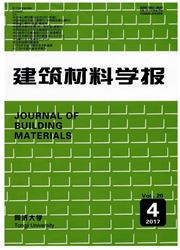

 中文摘要:
中文摘要:
通过MLS66(mobile load simulator 66)加速加载试验,定性、定量探讨了重载交通下高温及常温时沥青路面车辙变形的发生及发展规律.结果表明:在轮载初期的二次压实下路面产生的压密性车辙约占总车辙深度的1/3-1/2;高温下压密变形速率比常温下高1个数量级左右,且平均车辙深度增加速率、平均稳定凹陷变形速率分别约为后者的2倍及5倍;在稳定加载期内,高温下路面隆起面积占总车辙面积比例的平均值约为0.40,常温下约为0.45.建议:应根据平均车辙深度增加速率估算车辙变形的发展情况,制定相应的沥青路面养护管理计划;对于改性类沥青混合料需进行极端高温的抗形变能力试验;应以车辙面积和空隙率的变化来评判车辙变形的发生及类型;应改进中面层材料的组成设计,采用模量较高的沥青混合料.
 英文摘要:
英文摘要:
Rutting deformation of asphalt pavement under heavy trafficking at both high and ambient temperatures was evaluated qualitatively and quantitatively through an accelerated pavement testing(APT) with MLS66(mobile load simulator 66). The results show that the compression rutting deformation from secondary compaction in the initial loading stage is up to 1/3 1/2 of the total rutting depth. At the high temperature, the compression rutting deformation rate is one order of magnitude higher and its average increase rate of rutting depth and average rate of pit deformation in the stable loading stage are approximately 2 times and 5 times that at ambient temperature respectively. In the stable loading stage,the average ratio of uplift area to total rutting area at high temperature is about 0.40, while the ratio is 0.45 at ambient temperature. It suggests that maintenance management plan can be made according to the estimation of the rutting development based on the average increase rate of rutting depth. For the modified asphalt mixture, extreme high temperature deformation resistance requires to be tested. The occurrence and the type of rutting can be judged with the changes of rutting area and volume of air void, and the composition design of middle layer needs an improvement with high modulus asphalt mixture.
 同期刊论文项目
同期刊论文项目
 同项目期刊论文
同项目期刊论文
 期刊信息
期刊信息
